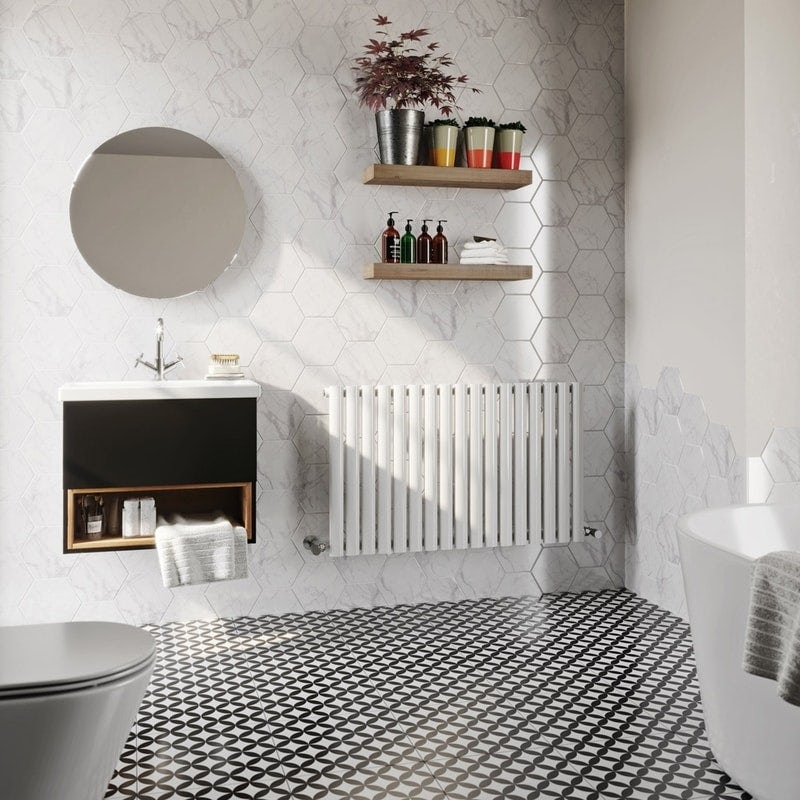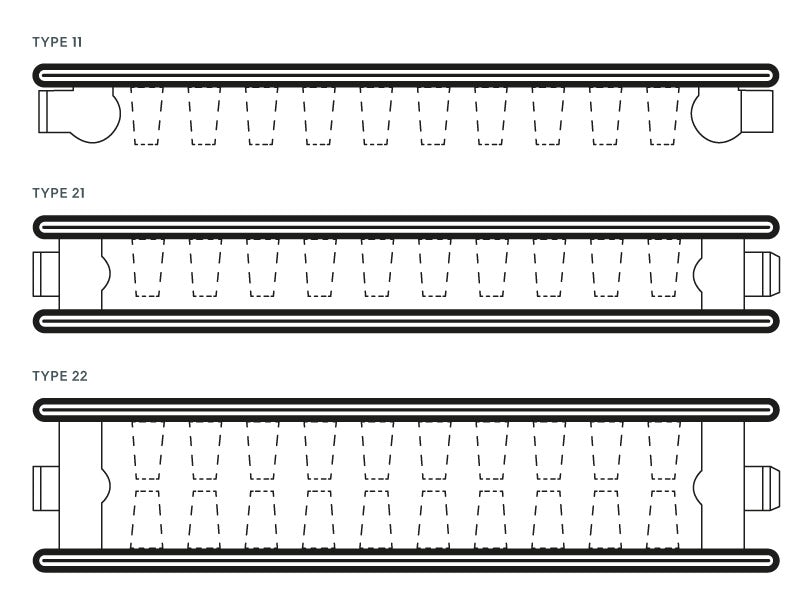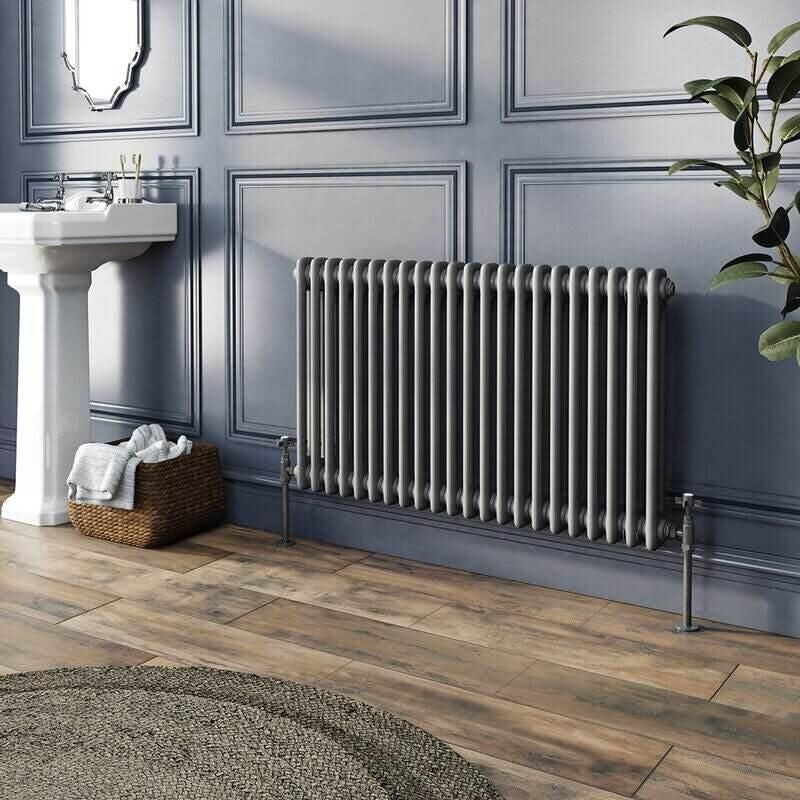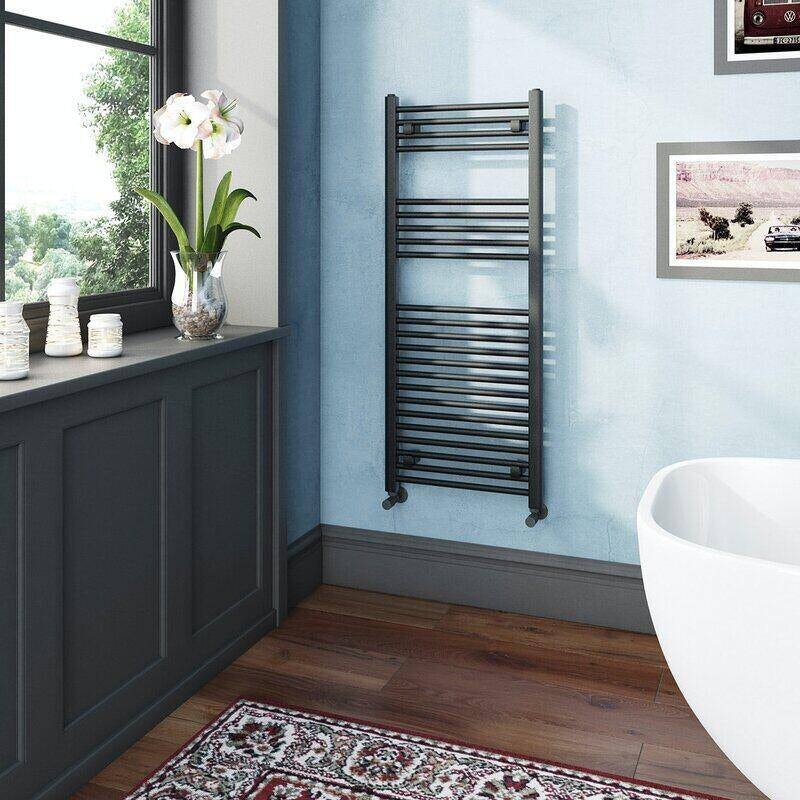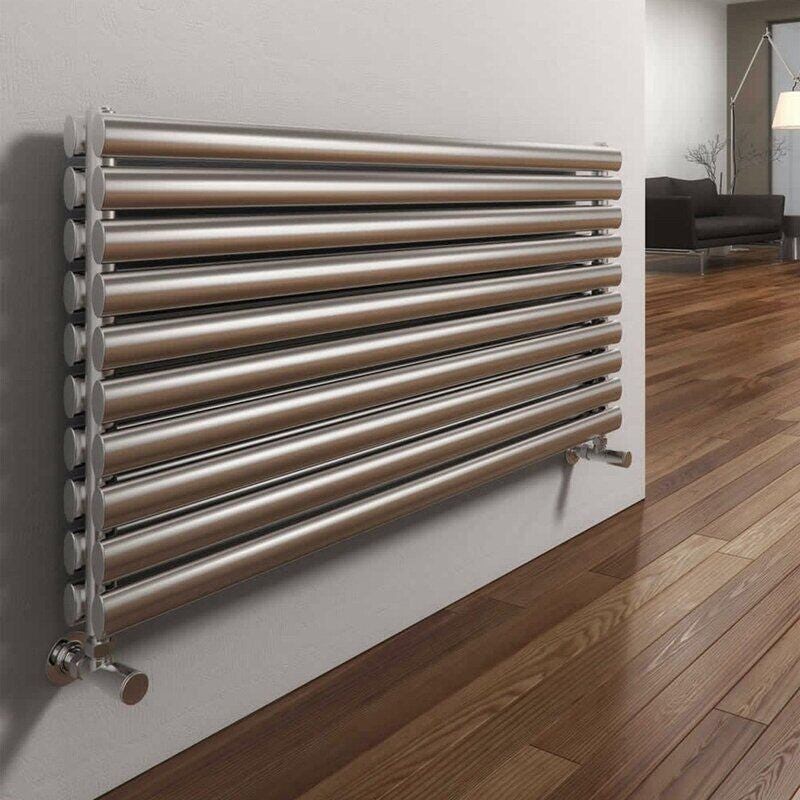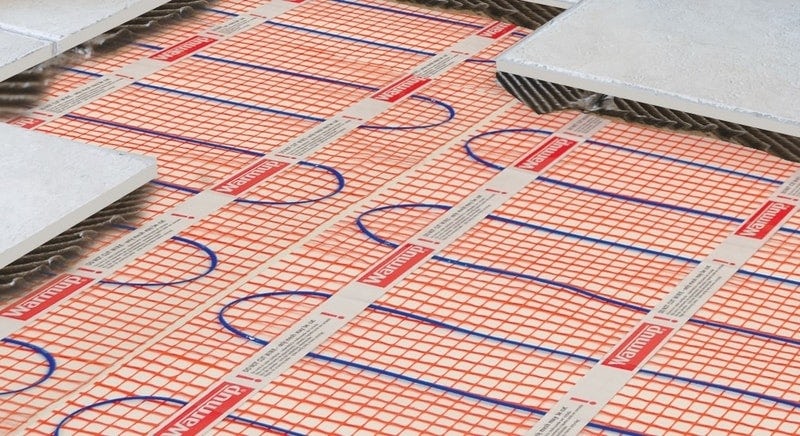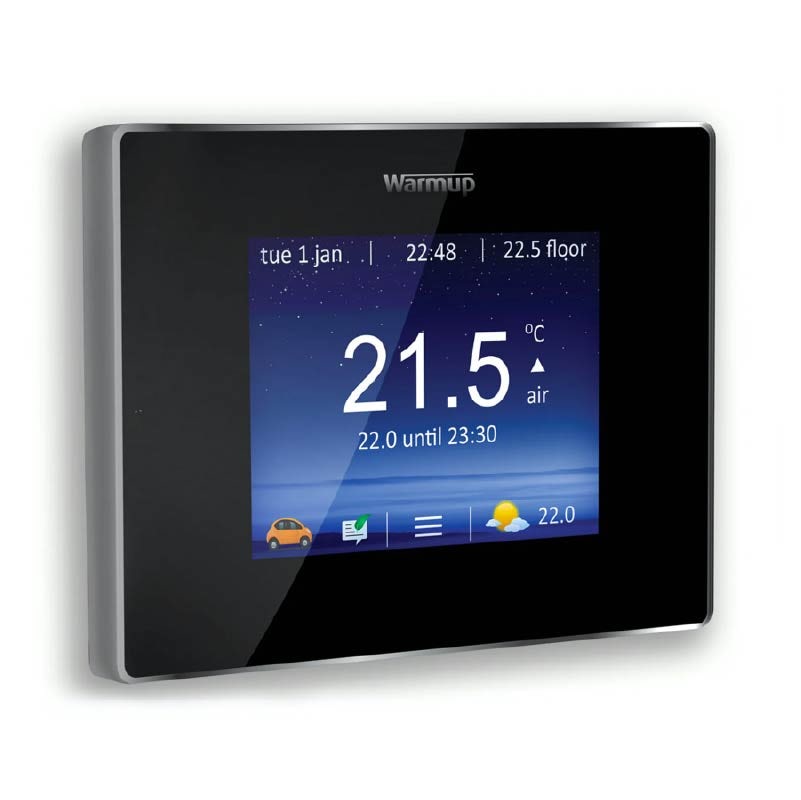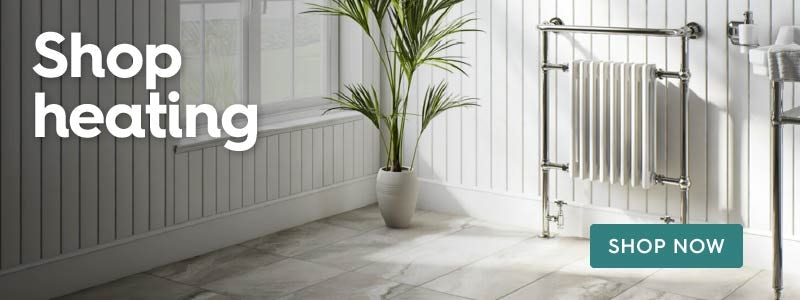In these uncertain times, we discover how much money you could save by choosing the right kind of heating for both your bathroom and the rest of your home.
With escalating utility costs there has never been a better time to consider how much money you could save on heating your home. Especially when you consider that, according to a recent Energy Savings Trust report, around 55% of our home energy bills are for heating and hot water.
Prior to the global jump in heating bills, it was estimated that around 10% of UK households lived in fuel poverty. Today that figure is almost 15%, according to the charity National Energy Action.
Despite this, there are still many households unknowingly using heat excessively. And the reason for this isn’t only poor heating systems or bad insulation. Many homeowners simply don’t have a clue how much heating their home actually needs.
The bathroom may be the smallest room in the house, but if you’re putting too much heat into it then it’s a waste of money. There is a way to work out exactly how much heat you need though—and that’s by calculating the British Thermal Unit (BTU) output required for your room. In other words, exactly how many units you need to keep the room efficiently warm.
The heating in your home can be both stylish and efficient
Why your BTU calculation is so important
The higher your BTU rating, the warmer the room will be. That means if you’re using too many units to heat your room you’re paying too much money. If the BTU score is too low for your bathroom, then you’ll also lose out financially. That’s because you’ll end up switching the heating up to maximum because the room will be too cold otherwise. What you’re looking for then, is the “happy medium”, i.e., the optimal heating point for your bathroom.
How to calculate your BTU
Don’t worry—you don’t have to be a maths genius to work out how much BTU your room needs. What you do need to understand though is that 1 BTU is equal to 1055 joules and is the amount of energy needed to heat 0.45kg (1lb) of water by -17°C (1°F). For more information, read our guide to calculating your BTU.
When it comes to calculating what the BTU figure is for a particular room then there are certain factors you need to consider. These include they type of room (the kitchen tends to have a lower BTU requirement than the sitting room, for instance). There’s also obviously the size of the room to factor in as well as any potential areas of heat loss, such as windows or doors.
To calculate room size: Simply measure the length, width and height of the room in metres. If the room has a bay window or an alcove then measure these separately and add to the total of the overall rectangle. To get a subtotal multiply the figure you have for the width by the height and length of the walls. For more tips, see our guide to measuring your bathroom.
To calculate heat loss: There are standard ratings you can add to the subtotal that differ depending on whether or not you have single or double glazing. For double glazing in a bathroom it’s 121.5 and single glazing 148.50 (as more heat will escape). In a bedroom, where the windows will be larger, the figure is 108 for double glazing and 132 for single.
To calculate the heat requirement for a double bedroom that measures 4.2m (L) x 4.4m (W) x 2.5 (H), you’ll get a sub total of 46.2. With double glazing it works out at 46.2 x 108. That gives a figure of 4989.6. Rounded up, it gives a BTU for the bedroom of 4990.
It would be pretty standard for a large family bathroom with one double glazed window to require a BTU of 1896. And, in this instance, a large heated towel rail would certainly do the trick.
Choosing the right heating for your bathroom
Looking at the bathroom in particular, there are 3 main types of heating options available. These are a radiator, heated towel rail and underfloor heating. We’ll go on to discuss each here, looking at why they work for a particular scenario:
Radiators
These are available in a range of different types, mainly these:
Panel radiators
Panel radiators are available as single or double forms of heating. In the case of the single convector panel radiator, this is one long panel designed to sit against the wall. It’s great for a small bathroom that doesn’t require a lot of heating and where wall space is limited. Larger bathrooms will obviously need more heat, hence the need for a double panel radiator. This involves 2 panels and 2 convectors. These take the form of zig zags between the panels and will heat the room up far quicker than a single panel radiator.
Find out the differences between different radiators in our buying guide, by clicking on the image above
Even if your bathroom is just medium-sized, if it’s not insulated properly and there is the potential for heat to escape through a large single glazed window, then it’s still best to opt for a double panel radiator—otherwise the room just won’t feel warm enough.
Designer radiators
Designer radiators are an increasingly popular choice for bathrooms these days. That’s mainly because they look so good, in addition to proving efficient. They can work well in small bathrooms where they can, for instance, double as a towel warmer or mirror.
Controlling heat with a Thermostatic Radiator Valve System (TRVS)
A TRVS allows you to control individual radiators so that you get the heat only where you need it. Not only that, but the valve self-regulates the flow of water into the radiator (and by default the amount of heat) by switching itself up or down as the temperature of the room changes. This means you only use the energy you need to heat the room. It makes it a far more efficient system than a manual radiator valve.
Just make sure you don’t have your valve near a window where draughts can confuse the valve, causing it to emit the wrong output. By the same token, it won’t work well in the bathroom since the heat from the shower or bath will confuse the thermostat, causing it to switch off.
Battery-powered thermostats with better heat detection are available today, making the TRV more accurate. Electronic intelligent heating systems can be linked to home systems, allowing you to manage TRVS from a smartphone.
Radiators use convection heating. This means that the cold air in a room heats up when it passes through the radiator. The hot air then rises to the top of the room until it cools, at which point it sinks and goes through the radiator again. Only to repeat itself. The fact the hot air rises to the ceiling first rather than those in the room, makes it a less efficient form of heating than, for instance, underfloor heating.
Radiators can also be used to complement the look and feel of a room
Heated towel rails
There aren’t many bathrooms that don’t have a radiator or heated towel rail these days. The latter provide cosy warmth when you exit the shower or bath and heat up the room at the same time.
Heated towel rails can be either connected to your home’s central heating system or have their own heating element. If part of the central heating, then when this is switched off you won’t get any warm towels—unless you turn off all the other heaters in the house. With an element you can use electric heat during the summer.
How large a towel rail you’ll need depends on the size of the bathroom and how often it’s used. At Victoria Plum, we recommend 400 BTUs per square metre of floor space. That’s if your bathroom only has one well-insulated outside wall and a small window.
If you have a large family with lots of towels piled onto the rail, then it’s a good idea to go for a BTU that’s around 10 percent higher than the standard rating for your bathroom.
A heated towel rail will warm both your room and your towels
Efficient materials for heating your home
Most heated towel rails are made from mild steel then sealed with chrome or paint to prevent them rusting. As a material. mild steel is similar to stainless steel but without the high carbon content. That means it can be shaped more easily and is less expensive to manufacture (meaning a lower price when you buy it). It’s an excellent heat source and which is why it’s also used in pots and pans. It’s also a material that can be continually recycled.
Another excellent heating material is aluminium. Not only does an aluminium towel rail or radiator warm up quicker than other materials, but it also gives out a more constant heat. It doesn’t need a lot of water to provide an impressive amount of heat, making it very energy efficient. There’s no chance of it rusting so it doesn’t need to be painted or sealed. It can also be recycled.
Stainless steel radiators look great but are more of an upmarket option. They’re anti-rust, durable and practically maintenance-free.
While it may cost a bit more, stainless steel heating could be a great investment
Underfloor heating
Underfloor heating (UFH) is one of the most efficient forms of heating around. That’s because, unlike radiators and towel rails, it uses only radiation to heat the room. And it does so in an even manner—so there won’t be hot spots (in front of a radiator) and cold corners of the room. Not only that, but the room is warmed from the ground upwards (heat always rises), meaning you’ll get the best of the heat.
UFH is particularly popular in bathrooms and kitchens. But it’s possible to have it fitted throughout an entire house.
It’s common—and sensible—to have UFH running continuously during the winter. That’s because it can take some time to warm up, meaning if it’s constantly switched on and off there will be cold periods.
There are 2 forms of UFH: systems powered by electric and those that use water. If you are retrofitting, then electric is best, but if you’re building from scratch, then a water-based UFH system will reap more rewards.
Electric underfloor heating comes in the form of mats, cable and foil. Heating mats are good for placing under stone floors in a square room. Cables work well in large, irregularly-shaped rooms, while foil is best for wooden floors.
Water underfloor heating works with pipes connected to a boiler or heat pump. The former will heat a room quicker.
Underfloor heating is a great option for bathrooms
Cost of underfloor heating
How much UFH costs depends on how old your building is, the size of the room you want to heat and whether you opt for electric or water. It’s not uncommon for a retrofit electric system to cost double what it would in a new build ie £4,250 and £2,450 respectively. To retrofit a water UFH system you’re looking at bill of £10,500. Fitting it during installation in a new build is much less expensive at £6,500. If you're specifically looking for installation costs for a single bathroom, see our bathroom costs guide.
The benefits of underfloor heating include the following:
- It’s energy-efficient and a low-cost form of heating
- It doesn’t detract from the size or design of a room because it’s unseen
- It’s possible to switch off the heat in rooms that aren’t being used
- You can use UFH with various types of flooring, from vinyl tile to wood and stone
- It feels lovely and warm when you walk around
- It’s an even heat (rather than sporadic)
- You can fit it regardless of the shape of the room
- Unlike radiators UFH is silent when on
- It’s less likely to cause allergies as there’s no dust
- It’s safer than brushing naked skin against a hot radiator
- Little maintenance and no cleaning require
- It gets rid of dampness on the floor making you less likely to slip
The only type of house that won’t benefit from UFH are those with tall ceilings. Another downside is that the floor has to be raised to fit the equipment. For electric systems, it’s from 3 to 6 mm, and 16mm for water-based systems.
Control the warmth of your room quickly and easily with underfloor heating
Making your heating work efficiently
Here are some great tips to make your heating work most efficiently:
- Make sure your radiator system is flushed out every now and then. A sludgy system affects heat output
- Put foil sheeting behind your radiators to reflect more heat into the room
- Switch your boiler to the correct settings, i.e., turn it down during the warmer months and off in summer
- Programme your heating to come on only when you need it to
- Keep doors between adjoining rooms shut to stop heat escaping
- Run your heating for an hour less each day
- Close your blinds or curtains at night to prevent heat loss by around 17 percent
- Install smart radiator valves so you’ll only heat the rooms you are using
- Don’t cover radiators with clothing or put them behind curtains as this will block the heat
By keeping radiators uncovered, they'll work more efficiently
Save almost £800 per year by being more efficient
The financial savings you can make, per year, by being more efficient could come to £776. Simply follow these money-saving tips:
- Keep your thermostat at a temperature you’re comfortable with—as low as possible unless you’re elderly. Turn down your thermostat. Just one degree lower could result in a £128 saving across the year.
- Using thermostatic radiator valves (rather than a central heating system) can save £150 a year.
- Turn the flow temperature down on your combi boiler from 80 degrees centigrade to 60 and save £112 per year.
- Restrict your showering to just 4 minutes every morning and save around £95 a year.
- Turning lights off when you leave the room is worth £25 a year.
- Blocking draughts under doors etc can save you £50 a year.
- Washing clothes at 30 degrees rather than 40 and only when the drum is full can save £72.
- Use one less run of the dishwasher a week and save £27 a year.
- Stop using your energy-guzzling tumble drier and save £117 per year.
Shop heating for your bathroom and home
To ensure your heating is as efficient as can be, why not browse the full range of radiators, heated towel rails and underfloor heating systems at Victoria Plum. We’ve more than just bathroom heating in stock, with a wide selection of traditional and designer radiators for all rooms in your home. Click the image below to begin shopping.
More advice on heating your home and saving on your bills
In these testing times, we could all do with saving a little more cash on our heating, water and electric bills. Thankfully, here at Victoria Plum, we’ve got plenty of expert advice to share with you. Click on any of the links below to find out more.

